Two young Black men disappeared a thousand miles apart, but their stories are eerily similar. Both left strange clues behind, but neither got the attention they deserved. What happened to Jelani and Daniel?
Episode Media
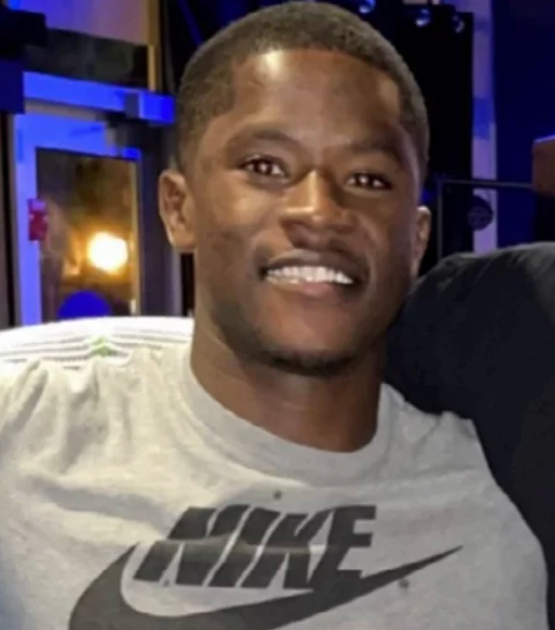
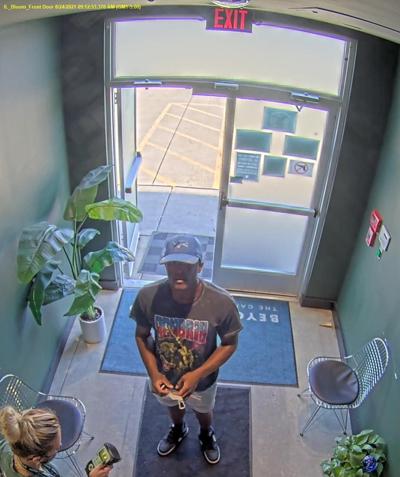

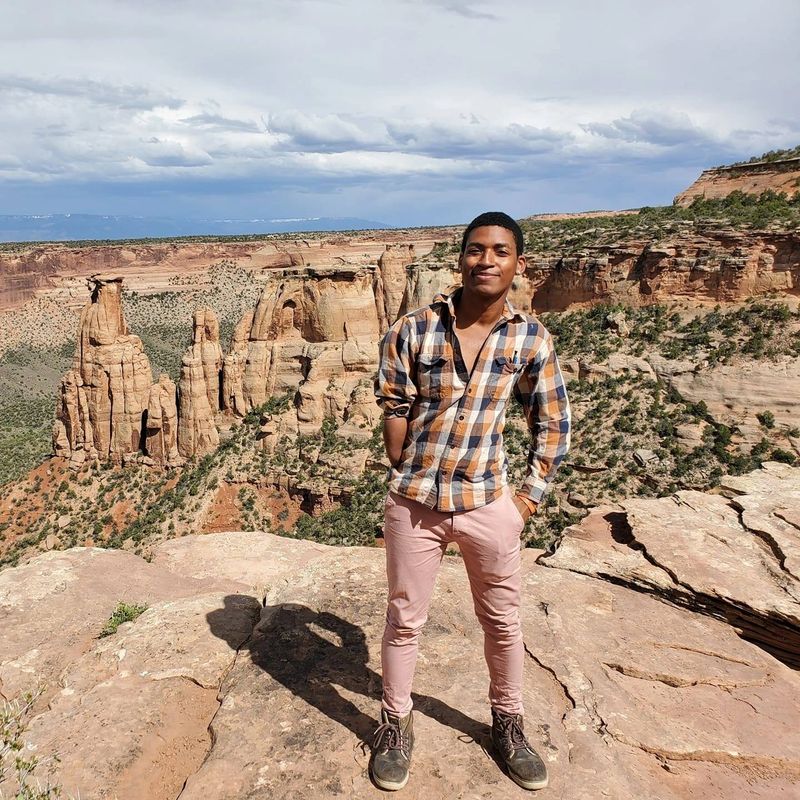

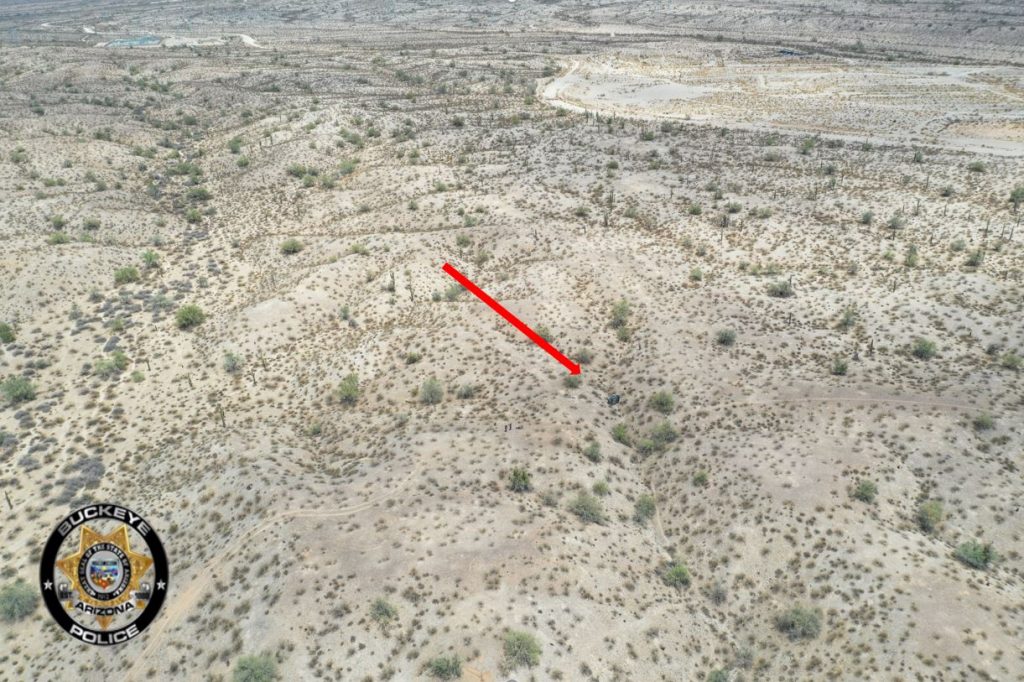
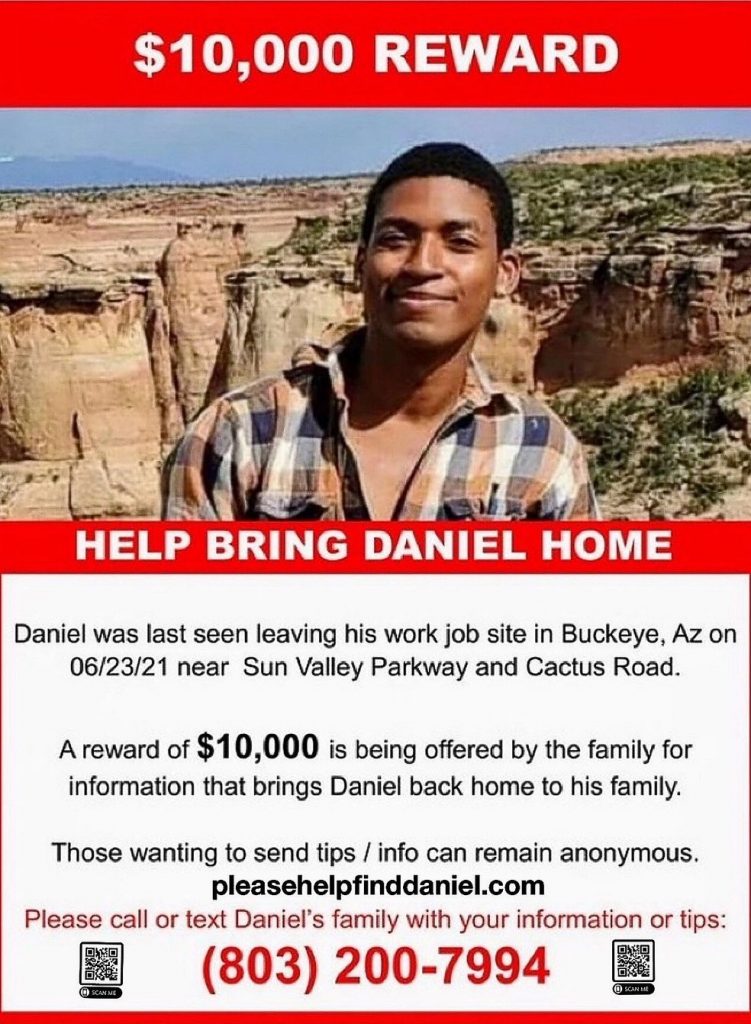
Episode Sources
- Families Of Jelani Day And Daniel Robinson, Missing For Weeks, Push For Answers
- Bloomington Police Department Investigation Document
- Search for missing Illinois State University student Jelani Day continues into fourth week
- Jelani Day’s Mother Says Case Not Getting The Attention It Deserves
- Police: Jelani Day’s death “unusual”
- Jelani Day’s Body Is Identified A Month After The Grad Student Went Missing
- Watch now: What happened to Illinois State University student Jelani Day?
- Jelani Day’s family suspects foul play in son’s death, urges public for answers: ‘Somebody knows something’
- Fraternity brothers of Alabama A&M grad Jelani Day petition state, feds to investigate his death
- The mystery of the death of a son of Danville, Jelani Day
- Video FBI is still searching for answers in Jelani Day’s final movements
- Jelani Day case: Family upset FBI looking at 25-year-old’s death as possible suicide
- Facebook: Justice for Jelani Day
- Facebook: City of Bloomington Police
- SC father starts petition, hires private investigator to locate son reported missing in Arizona
- Daniel Robinson: Buckeye Police continue to search for missing geologist
- Police report released on missing geologist Daniel Robinson
- Gabby Petito case draws renewed attention to missing Buckeye geologist Daniel Robinson
- Witness: Missing geologist was acting erratically before disappearance
- Family continues search for Daniel Robinson, who went missing in June
- His car was found nearly a month after he went missing. His dad hired a private investigator to find his son
- Dad hires private investigator to help find missing geologist
- Who Is Daniel Robinson? Missing Geologist Disappeared in Arizona Desert
- These families of missing Black people are frustrated with the lack of response to their cases
- Police confirm human remains found are not of missing Buckeye man
- What We Know About Missing Arizona Geologist Daniel Robinson
- Please Help Find Daniel – Missing Person, Personal Website
Episode Transcript
Welcome back to Bite-Sized Crime. This week I’m bringing you the cases of two young Black men, a thousand miles apart but strangely similar. They have been thrust into the spotlight as America begins to reckon with our fascination with missing persons cases and why the stories of people of color often go unnoticed. This episode will discuss sensitive topics, so listener discretion is advised.
We begin with the story of 25-year-old Jelani Day. Jelani grew up in Danville, Illinois, the fourth of five children. His parents, Carmen and Seve Day, raised Jelani and his siblings to value hard work and education. Jelani was described as a good kid, ambitious and focused. He was an avid swimmer, competing on his school’s swim team. After high school, Jelani attended Alabama A&M University for his undergrad where he majored in speech pathology. Jelani then moved to Bloomington, Illinois to attend graduate school at Illinois State University.
In late August of this year, Jelani had just started the fall semester at Illinois State. Classes had been in session for a week, and Jelani was already working hard and making connections in the speech pathology program. But by the second week, Jelani was no longer showing up to class. He was scheduled to meet with one of his professors on the morning of August 24th, but Jelani didn’t show up. He was also scheduled for clinicals that afternoon, but again, Jelani didn’t show. His professor was understandably concerned – this was a competitive program, and graduate students weren’t the type to just skip important meetings or classes without letting anyone know. The professor called the campus police and reported Jelani missing.
Meanwhile, Jelani’s family back in Danville was also trying to find him. The last time any of them had spoken to him was Monday, August 23rd. This was definitely not like him – Jelani was in constant contact with his parents and siblings. After multiple attempts to get in touch with Jelani, they called the Bloomington Police Department on August 25th and filed a missing persons report.
Investigators quickly began piecing together a timeline. The last confirmed sighting of Jelani was on the university campus the morning of Tuesday, August 24th. After that, it seemed like Jelani had just vanished. The Bloomington Police Department issued a missing persons release, asking the public for any information about Jelani. They also released information about Jelani’s vehicle – a white 2010 Chrysler 300 that he had inherited from his grandfather.
On Thursday, August 26th, officers in Peru, Illinois – about an hour north of Bloomington – responded to a report of an abandoned vehicle in the woods behind the local YMCA. The car’s license plates were missing, but police were able to use law enforcement databases to connect the car to Jelani. Inside the car, a black t-shirt, white shorts, and baseball hat were found.
The Peru Police Department and Illinois State Police immediately set up a command post and conducted an extensive search of the area with K9 officers, first responders, and aerial drones. Unfortunately, Jelani was nowhere to be found.
Despite multiple appeals to the public for information, it would be several more days before investigators had any other leads. On August 31st, Bloomington police announced that they had obtained surveillance camera footage of Jelani the day he allegedly went missing. A security camera from the university’s student center showed Jelani at 7:20am on August 24th, wearing a blue button-up dress shirt, black pants, black belt, black dress shoes, and a blue face mask. At 9:12am – less than 2 hours later – cameras showed Jelani at the Beyond/Hello Dispensary, just 3 miles from campus. He was wearing a blue Detroit Lions baseball hat, a black Jimi Hendrix band t-shirt, white shorts, and black shoes with white soles. The exterior surveillance video captured Jelani’s white Chrysler in the parking lot.
Based on this information, investigators believe that Jelani disappeared sometime between the morning of August 24th and the afternoon of August 26th, when his car was found. The clothes he was wearing at the dispensary were the same clothes found inside the Chrysler.
Throughout the investigation, Jelani’s family worked tirelessly to bring attention to Jelani’s case, giving interviews and holding vigils. Jelani’s mother, Carmen, held firm in her belief that Jelani would be found, and she pushed detectives to keep Jelani’s case alive.
On September 4th, an additional search was conducted by the Illinois Search and Rescue Council in the LaSalle-Peru area. At 9:47am, a search team found a body floating near the south bank of the Illinois River, just east of the Route 251 Bridge. The body was so deteriorated that officials could not determine the identity. The LaSalle County Coroner’s Office told reporters that identification of the remains could take several weeks; that the Illinois State Police crime lab was backlogged.
After that, there seemed to be no movement in the case. Jelani’s mother was frustrated, and told local news outlets that it seemed like police had stopped looking for her son ever since the discovery of the body in the river.
The Bloomington Police Department refuted this claim, saying that the case was still open and active. “At one point during the investigation, five detectives, crime scene detectives, and CID supervisors were helping comb through digital evidence, physical evidence, and helping with investigation.”
Three weeks later, on Thursday, September 23, the LaSalle County Coroner announced that the body in the river had been identified through forensic dentistry and DNA testing as Jelani Day. The coroner did not release the cause of death due to the state of his remains, but Bloomington Police said that toxicology testing would be done in an attempt to learn how Jelani died.
Jelani’s family was heartbroken. “There are no words to clearly communicate our devastation.”
The next day, Jelani’s mother requested that the Illinois State Police take over the case, and she began to push for the FBI to get involved. The family’s attorney, Hallie Bezner, told reporters, “Right now we have more questions than answers. And we need to start getting some answers for our questions before we know the next steps.”
As of this week, the FBI is now helping with the investigation, but they seem to be leaning towards the possibility that Jelani took his own life. Jelani’s family does not believe that is the case. Jelani was not suicidal, and he had so much to live for. The family was planning an upcoming vacation, and Jelani had just started grad school; he was well on his way to achieving his dream of becoming a doctor. Also, Jelani was a swimmer; it doesn’t seem very likely that he would drive an hour away, park his car in the woods, remove his clothing, then walk several miles to jump in the Illinois River. But without any more information, investigators have little to go on and no answers to the many questions surrounding Jelani’s death.
Sadly, there is even less information in the case of 24-year-old Daniel Robinson.
A native of Columbia, South Carolina, Daniel graduated from the College of Charleston in 2019 and soon landed a job as a field geologist in Phoenix, Arizona. He was in charge of overseeing multiple sites in remote desert locations, often traveling long distances between projects. Daniel’s family described him as having an “innate passion for adventure”; he loved to travel and often took off at a moment’s notice. However, no matter when or where he went, he always communicated with his family and friends.
In the weeks leading up to his disappearance, Daniel had been acting strangely. In early June of this year, Daniel had begun making odd comments, and had even left his apartment door wide open one day, disappearing for several hours with no explanation.
On the morning of June 23rd, Daniel showed up for work at a remote drill site in the Arizona desert. Another geologist on site, Ken Elliott, said that everything seemed fine at first, but Daniel’s demeanor quickly changed, and he became distracted and distant. Elliott said that Daniel kept looking out into the desert, so many times that Elliott wondered if Daniel had some sort of medical condition. But Elliott didn’t know Daniel well – this was the first time the two had worked together – so he didn’t say anything about it.
Suddenly, Daniel turned around and walked over to his Jeep. Elliott was surprised. “I just assumed he was going to get something out of his vehicle. And he opened the door, got in, sat down, put on his seatbelt, then he looked at me and just waved at me and backed up and took off.”
Elliott definitely knew something was wrong at that point. He called their coworkers and let them know that Daniel had left, but they all assumed that Daniel just wasn’t feeling well and would call in sick. But hours passed and Daniel didn’t call.
By that evening, Daniel had been reported missing. Daniel’s family members immediately traveled to Arizona from South Carolina to help search.
Officers from the Buckeye Police Department pulled Daniel’s phone records and checked local hospitals, but Daniel was gone. On June 24th, Tempe Police were dispatched to Daniel’s apartment, but for some reason they didn’t go inside; in fact, they didn’t enter his apartment until two weeks after his disappearance. This was the beginning of a series of missteps in the investigation that would lead to so much wasted time and resources.
Daniel’s family requested that police do a helicopter search of the desert near the job site, but the request was initially denied. It wasn’t until July 7th that the police finally contacted the Civil Air Patrol to organize an aerial search.
On July 19th, a rancher found Daniel’s Jeep in a ravine not far from the original job site. It appeared that the Jeep had rolled and landed on its side. The air bags had been deployed. Unfortunately, Daniel was not in the car. His cellphone, wallet, and keys were found at the scene, as were the clothes he had last been seen wearing, but Daniel was gone. Was it possible that he had become disoriented from the crash and wandered off into the desert?
The terrain in the Arizona desert is harsh and unforgiving, with summer temperatures climbing well over 115 degrees. Even if Daniel had water with him, which it doesn’t appear he did, he wouldn’t be able to last long without shelter.
In light of the state of the Jeep and what colleagues and family had said about Daniel’s behavior, police don’t suspect foul play. But they did continue searching for Daniel, working with outside agencies to cover more than 70 square miles of desert in ground and aerial searches.
On July 31st, search teams discovered a human skull not far from where Daniel’s Jeep was found, but ultimately it turned out not to belong to Daniel.
At this point, the leads had dried up. Daniel’s father, David Robinson, was frustrated with the police department and the lack of media attention his son’s case was receiving. Finally, in mid-September, David hired a private investigator – former police officer Jeff McGrath.
McGrath, who specializes in accident investigations, began by looking at Daniel’s Jeep. The vehicle’s black box indicated that there were multiple crashes after the initial crash that deployed the airbags. Evidence shows that the Jeep drove another 11 miles after the first crash before crashing again. The ignition was cranked at least 40 times in between the crashes.
McGrath also found something odd in the desert – a single sock belonging to Daniel. It was found 3 miles away from the rest of Daniel’s clothing, closer to the job site than the crash site.
Daniel’s father is convinced that these clues add up to foul play. “You start to think all kinds of things especially with the evidence of the sock or vehicle cranked after the crash, you know, the vehicle being a staged event. It was placed where it was located, those kinds of things would make you think of foul play.”
McGrath agrees that something is odd about Daniel’s disappearance. He told reporters, “We definitely have something suspicious here. I don’t know if we have a crime or not, but we have enough suspicion to actually have a full investigation going on this.”
However, the Buckeye Police Department doesn’t seem to think Daniel’s disappearance is anything other than an accident. There has been very little movement in the case since the Jeep was found in July. David Robinson has temporarily relocated to Arizona, determined to find his son no matter what. He has created an online petition to encourage the police to take a closer look at the case, and he has been raising money to fund independent searches.
McGrath is still working the case, torn between theories of Daniel being the victim of foul play or just wandering off. “Maybe he did just take off, but he’s got nothing. There’s no evidence that he built an account somewhere to have money; he didn’t have much money to begin with. He didn’t have a phone, his ID… we didn’t see any of that pre-planning that you would see if somebody just wanted to just go be someone else.”
It’s been over three months and Daniel’s family still doesn’t have any answers. They are just as lost as Jelani Day’s family – all they have are strange clues that seem to lead nowhere. Police inaction and lack of media attention have created huge gaps in the timeline: searches that could have been done earlier, evidence that could have been collected and preserved.
Daniel’s brother Roger told reporters that he thinks the attention now is too little too late. “Had they been quick about it in the beginning… we wouldn’t be here 3 months later still searching for my brother and still looking for answers.”
Jelani’s mother Carmen believes her son deserves more than what he got, that he deserves the same attention that young women like Gabby Petito get. “I want them to look for my child like they’re looking for her. He is not a nobody, he is somebody — and I want him to come back home. I want them to give my son the same attention.”
If you have any information about the cases of Jelani Day or Daniel Robinson, please reach out to local authorities. For Jelani’s case, please contact the LaSalle County Sheriff’s Office at 815-433-2161. For Daniel’s case, please contact the Buckeye Police Department at 623-349-6400.
At the end of the day, we can all play a part in spreading awareness of missing persons cases and helping bring closure to families. Even if we don’t have direct information, we can share these stories with our friends and families so that every case gets the attention it deserves.
